Commenti / Domande (17)
![]() Sue ha scritto:
Sue ha scritto:
I have finally got around to trying this pattern and am a bit confused. Am I correct in thinking that what you say is the back is actually the front and vice versa. Because it seems that all the neckline shaping is on the back?
15.10.2025 - 16:01DROPS Design ha risposto:
Hi Sue, The back piece has shaping on the neckline but less so than on the front piece. And the pieces are correctly labelled. Regards, Drops Team.
16.10.2025 - 06:44
![]() Sue ha scritto:
Sue ha scritto:
I don't understand what the sentence below means. I am using needles not circular needles. Work as follows (1st row = WS): 2 edge st in GARTER ST - see explanation above - in stocking st (i.e. P on 1st row) until 2 sts remain, 2 edge sts in garter st. Does it mean the first row is purl until you get to the end and the last 2 stitches are knit. Is edge stitch a different stitch. Why don't you just say knit and purl?
13.11.2024 - 17:32DROPS Design ha risposto:
Hi Sue, The 2 edge stitches at the beginning and end of the row are knitted on all rows (garter stitch). The stitches in between are worked in stocking stitch (purled from the wrong side, knitted from the right side). Happy knitting!
14.11.2024 - 07:06
![]() Sue Feather ha scritto:
Sue Feather ha scritto:
I was originally going to try knitting Skipping stones but found the top down method really confusing. So looked at this one. I have already bought 9 balls of the Drops Andes yarn. I have done the tension test and it is only 8cm wide with 8cm and 11 stitches and 7cm deep with 15 rows. Usually my tension is exact - what am I doing wrong?
21.10.2024 - 18:26DROPS Design ha risposto:
Dear Mrs Feather, you can try with needles another material, it might help, or you can also try to block your swatch to check if you get correct measurements after blocking or then try with larger needles, remember correct tension will let you get the correct finished measurements matching chart for your size. Happy knitting!
22.10.2024 - 09:00
![]() Béatrice Lassalle ha scritto:
Béatrice Lassalle ha scritto:
Bonjour Pour le montage, je ne comprends pas bien : vous dites : "monter les manches. Faire la couture sous les manches....." Je dois monter les manches alors qu'elles ne sont pas fermées ? Ensuite, je les ferme en commençant par les poignets ? Je fais comme en couture pour "monter les manches" ? je mets le devant et le dos à plat ? Merci de votre réponse qui j'espère m'aidera.
19.01.2022 - 14:03DROPS Design ha risposto:
Bonjour Mme Lasalle, faites les coutures dans l'ordre qui vous paraît le plus simple - cette vidéo par exemple montre comment coudre une manche (tricotée en rond, donc déjà assemblée par exemple) le long des emmanchures. Pour coudre les manches, vous pouvez effectivement commencer à partir des poignets; si vos manches sont déjà montées le long des emmanchures, prolongez la couture le long du côté jusqu'à la fente du bas. Bon assemblage!
19.01.2022 - 17:09
![]() Vinciane ha scritto:
Vinciane ha scritto:
Bonjour, je ne comprends pas pourquoi il faut tricoter avec des aiguilles circulaires alors qu'on ne tricote pas en rond... quelqu'un peut-il m'éclairer ? Merci.
04.11.2020 - 21:20DROPS Design ha risposto:
Bonjour Vinciane, bien volontiers: on utilise des aiguilles circulaires pour avoir suffisamment de place pour y loger toutes les mailles, vous pouvez utiliser dans ces cas là des aiguilles droites, mais pensez à toujours bien vérifier votre tension, car les mailles seront plus serrées - vous trouverez plus d'infos ici. Bon tricot!
05.11.2020 - 11:12
![]() Michelle ha scritto:
Michelle ha scritto:
I love this! I have never knitted a sweater. Can this be made without the side slits? If yes, what adjustments would need to be made? Is this a good pattern for my first sweater? Thank you!
04.11.2020 - 17:27DROPS Design ha risposto:
Hi Michelle! The pattern is easy, give it a try:) This can be made without the side slits, sew underarm seam and side seam, to the end (without 14 cm vent). Happy knitting!
04.11.2020 - 18:46
![]() Gabrielle ha scritto:
Gabrielle ha scritto:
I prefer patterns that are worked back and forth (not in the round). How can I search for / find these patterns? Would it be possible to have a separate category for patterns worked back and forth?
24.04.2018 - 10:25DROPS Design ha risposto:
Dear Gabrielle, there is no search for patterns worked back and forth, this one eg is worked back and forth in several parts sewn tog at the end. And you'll find here how to adapt a pattern into straight needles. Happy knitting!
24.04.2018 - 14:24
![]() Pia Neergaard ha scritto:
Pia Neergaard ha scritto:
Spørgsmål har noget garn der har 70% alpaca 20 % uld og 10 % acrylic og vil gerne strikke denne opskrift , garnet hedder bbb alpaka 70
16.04.2018 - 22:26DROPS Design ha risposto:
Hei Pia. For å finne ut om garnet kan byttes i det du har må du sjekke strikkefastheten. Denne oppskriften strikkes med garn fra garngruppe E, evt 2 tråder med garngruppe C, og strikkefasthet 11 m x 15 p glstrikk på 10 x 10 cm. Du kan lese mer om garngruppene våre her: link Innholdet i garnet kan påvirke plaggets egenskaper (hvordan det kjennes ut, hvordan det vaskes osv), så det blir opp til deg. God fornøyelse
17.04.2018 - 10:12
![]() Els-Marie Edelfeldt ha scritto:
Els-Marie Edelfeldt ha scritto:
Stickar tröja mönster 171/19 "Juniper"... när ärmen beskrivs står det: Öka vart 6:e varv 5 ggr (min stl. M) OCH vart 4:e varv 7 går. Hur skall jag tolka det????? Växlar jag eller tar jag det efter varandra? Otydlig beskrivning tycker jag....Mvh Els-Marie
23.11.2017 - 13:49DROPS Design ha risposto:
Du ska först öka 5 gånger på vart 6:e varv och därefter öka 7 gånger på vart 4:e varv.
23.11.2017 - 14:25
![]() Trisha Cochrane ha scritto:
Trisha Cochrane ha scritto:
Hi there - I have just started knitting the Juniper with Drops Andes wool. But the bottom edge is already rolling up - and since there is no ribbing I am not clear how it will stay straight as in the photo? Could you help? Thank you :)
24.02.2017 - 09:05DROPS Design ha risposto:
Dear Mrs Cochrane, you can block the jumper before wearing it. Happy knitting!
24.02.2017 - 09:54
Juniper#junipersweater |
|
|
|
|
Maglione DROPS ai ferri, con spacchi laterali e scollo rotondo, in"”Andes". Taglie: Dalla S alla XXXL.
DROPS 171-19 |
|
|
PUNTO LEGACCIO (in tondo): Lavorare * 1 giro a dir, 1 giro a rov *, ripetere da *-*. 1 costa a legaccio = 2 giri PUNTO LEGACCIO (avanti e indietro sui ferri): Lavorare tutti i ferri a dir. 1 costa a legaccio = 2 ferri a dir. SUGGERIMENTO PER GLI AUMENTI: Per aumentare 1 m, fare 1 m gettata; al ferro successivo, lavorare la m gettata a dir ritorto (quindi lavorarla nel filo posteriore e non in quello anteriore) per evitare che si formi un buco. ---------------------------------------------------------- DIETRO: Si lavora avanti e indietro sui ferri circolari. Avviare 48-53-57-63-69-77 m sui ferri circolari n° 8 con il filato Andes. Lavorare come segue (1° ferro = rovescio del lavoro): 2 m vivagno a PUNTO LEGACCIO - vedere le spiegazioni sopra - lavorare a maglia rasata (quindi lavorare il 1° ferro a rov) finché non rimangono 2 m, 2 m vivagno a punto legaccio. Proseguire avanti e indietro in questo modo finché il lavoro non misura 14 cm. Alla fine dei 2 ferri successivi, avviare 1 nuova m da ciascun lato = 50-55-59-65-71-79 m. Proseguire a maglia rasata e con 1 m vivagno a punto legaccio da ciascun lato. RICORDARSI DI MANTENERE LA CORRETTA TENSIONE DEL LAVORO! Quando il lavoro misura 31-32-33-34-35-36 cm, intrecciare 2-2-3-3-4-4 m da ciascun lato per gli scalfi = 46-51-53-59-63-71 m. Quando il lavoro misura 50-52-54-56-58-60 cm, intrecciare le 16-17-17-17-19-19 m centrali per lo scollo e finire ogni spalla separatamente. Al ferro successivo, intrecciare 1 m per lo scollo =14-16-17-20-21-25 m per la spalla. Intrecciare le m quando il lavoro misura 52-54-56-58-60-62 cm. Lavorare l’altra spalla in modo uguale. DAVANTI: Avviare le m e lavorare come indicato per il dietro. Quando il lavoro misura 45-46-48-49-51-52 cm, mettere in attesa su un ferma maglie le 8-9-9-9-11-11 m centrali per lo scollo e finire ogni spalla separatamente. Intrecciare per lo scollo ad ogni ferro con inizio dallo scollo, come segue: intrecciare 2 m 2 volte e 1 m 1 volta = per la spalla rimangono 14-16-17-20-21-25 m. Intrecciare le m quando il lavoro misura 52-54-56-58-60-62 cm. Lavorare l’altra spalla in modo uguale. MANICHE: Si lavorano avanti e indietro sui ferri circolari. Avviare 26-27-28-30-31-32 m (compresa 1 m vivagno da ciascun lato) sui ferri circolari n° 8 con il filato Andes. Lavorare come segue (1° ferro = rovescio del lavoro): 1 m vivagno a punto legaccio, maglia rasata (quindi lavorare il 1° ferro a rov) finché non rimane 1 m, 1 m vivagno a punto legaccio. Quando il lavoro misura 10-10-10-12-12-9 cm, aumentare 1 m da ciascun lato - VEDERE IL SUGGERIMENTO PER GLI AUMENTI! Aumentare in questo modo ogni 6 ferri 11-5-5-5-3-0 volte, poi ogni 4 ferri 0-7-7-7-10-14 volte (= 11-12-12-12-13-14 volte in tutto) = 48-51-52-54-57-60 m. Intrecciare le m quando il lavoro misura 54-53-53-51-51-48 cm (misure più corte per le taglie più grandi perché le spalle sono più larghe). Lavorare la seconda manica in modo uguale. CONFEZIONE: Cucire le spalle. Montare le maniche. Cucire sotto le maniche e i lati del davanti / dietro, iniziando dal polso fino alle m vivagno avviate sui lati del davanti e dietro (= 14 cm per gli spacchi laterali). Cucire all’interno della m vivagno a punto legaccio da ciascun lato. Ripetere dall’altra parte. COLLO: Si lavora in tondo sui ferri circolari. Con i ferri circolari n° 7 ed il filato Andes, riprendere sul diritto del lavoro ca.50-60 m (comprese le maglie messe in attesa sul ferma maglie). Lavorare 2 coste a legaccio. Intrecciare le m. |
|
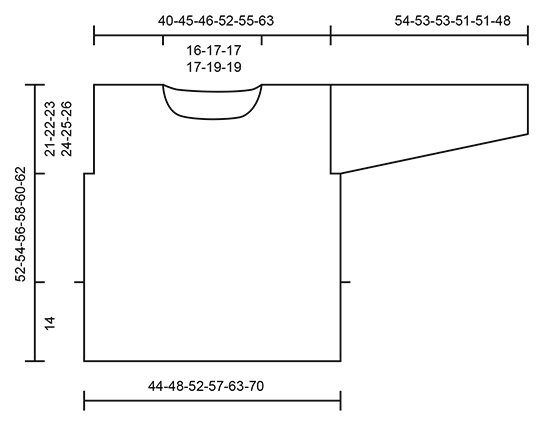 |
|
Avete terminato questo modello?Allora taggate le vostre foto con #dropspattern #junipersweater o inviatele alla #dropsfan gallery. Avete bisogno di aiuto con questo modello?Troverete 25 video tutorial, una sezione per i commenti/domande e molto altro guardando il modello su www.garnstudio.com © 1982-2025 DROPS Design A/S. Ci riserviamo tutti i diritti. Questo documento, compreso tutte le sue sotto-sezioni, è protetto dalle leggi sul copyright. Potete leggere quello che potete fare con i nostri modelli alla fine di ogni modello sul nostro sito. |









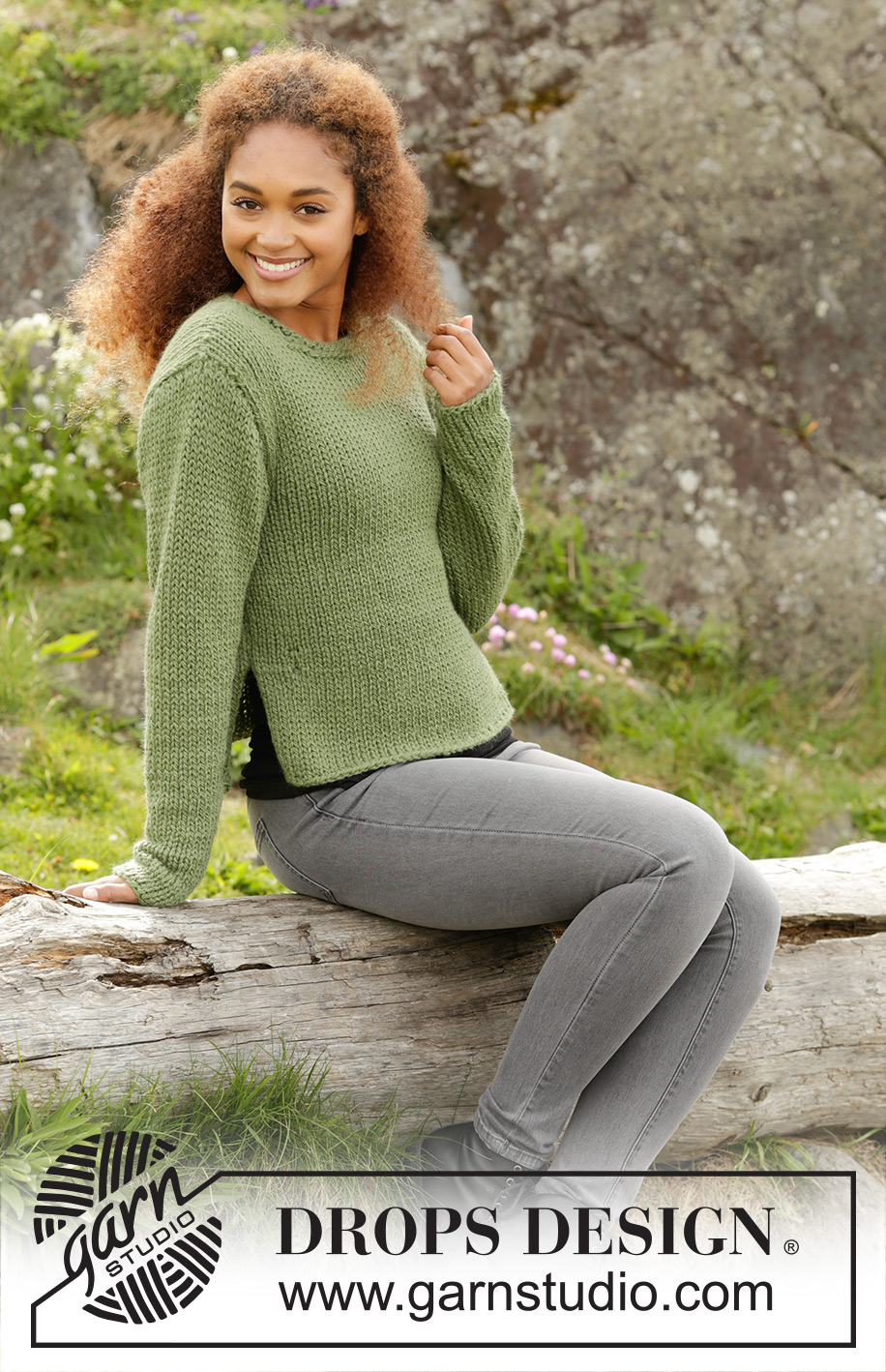


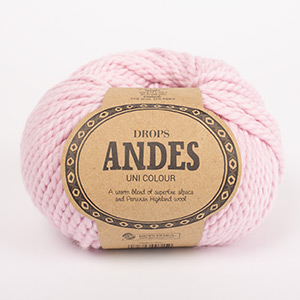
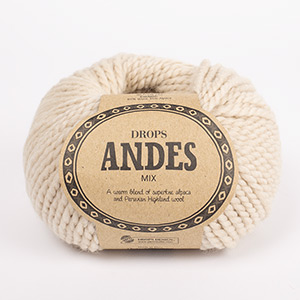

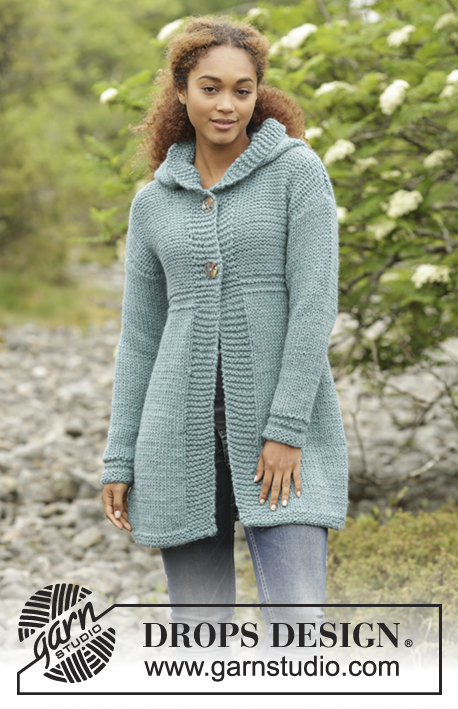













































Lasciare un commento sul modello DROPS 171-19
Noi saremmo felici di ricevere i tuoi commenti e opinioni su questo modello!
Se vuoi fare una domanda, fai per favore attenzione a selezionare la categoria corretta nella casella qui sotto per velocizzare il processo di risposta. I campi richiesti sono indicati da *.